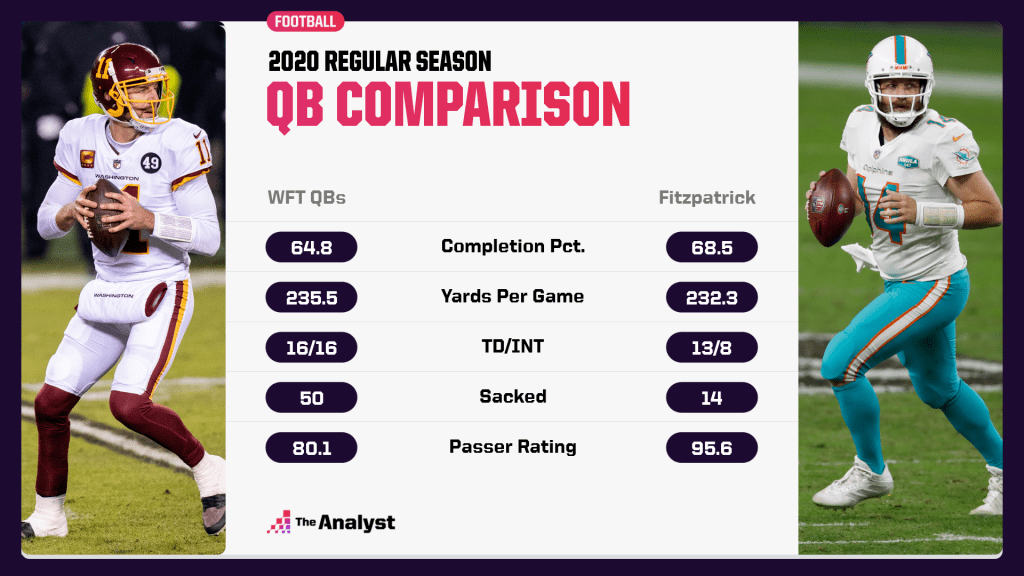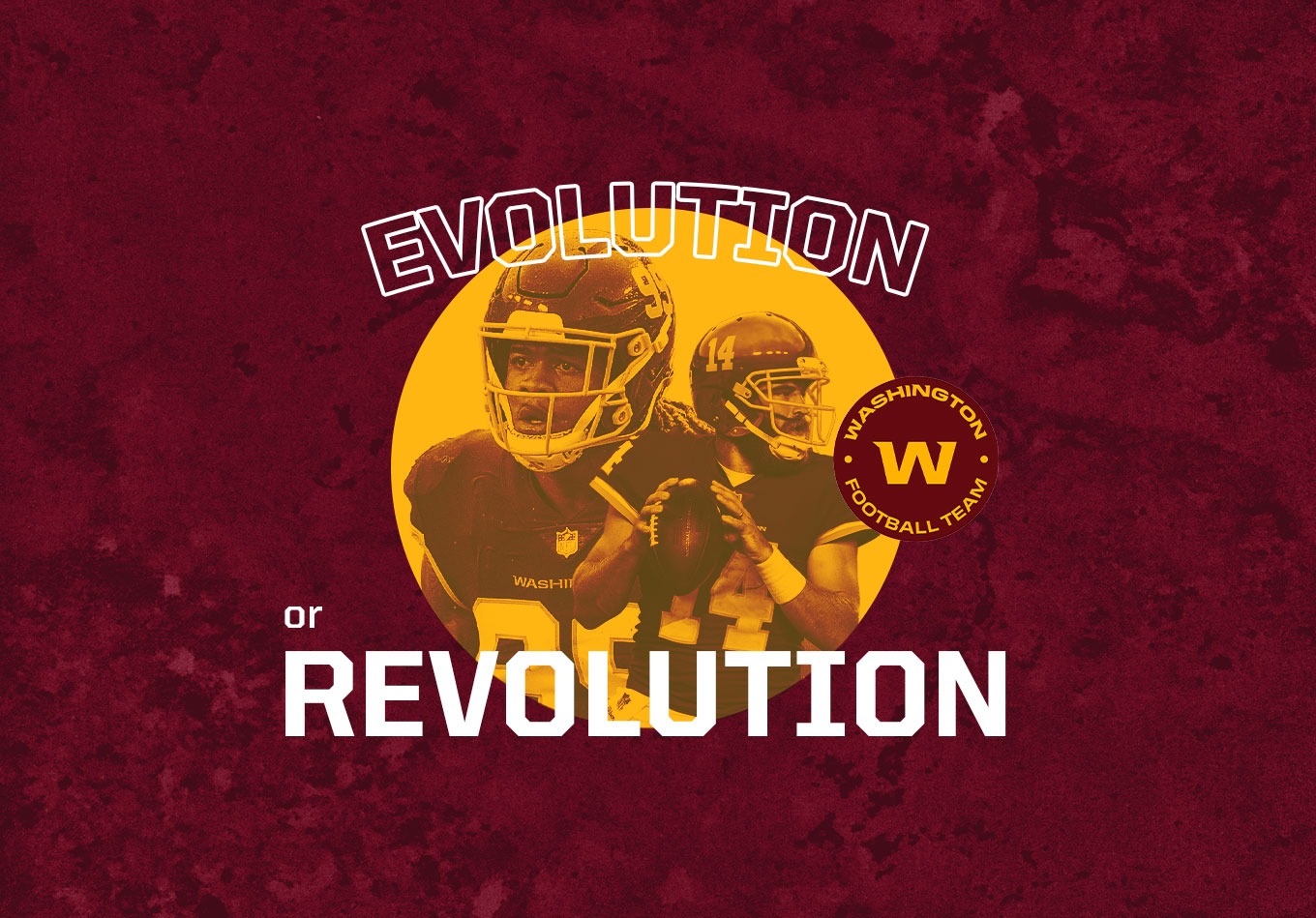Evolution or Revolution is a series that analyzes whether a team needs a few tweaks or a fundamental reboot.
Winning the NFC East in 2020 shouldn’t be something to take too much pride in.
The Washington Football Team came through the worst division in football with a 7-9 record before being beaten in the playoffs by the eventual Super Bowl champion Tampa Bay Buccaneers.
Aside from scraping together the most wins, the strange season provided Washington with greater cause for optimism than its divisional rivals.
Ron Rivera’s team was particularly strong on defense, as a lack of top-level production at the quarterback position prevented it from being anything more than the best of a bad bunch.
However, Washington’s offseason moves to date suggest it should get better in 2021.
Offense
Washington had three different starters at quarterback last year, rarely the sign of an effective offensive unit.
And none of Dwayne Haskins (six starts), Alex Smith (six) or Kyle Allen (four) are set to line up under center in the coming campaign with the Ryan Fitzpatrick addition. The new QB ended 2020 as a backup on a non-playoff team in Miami but still undoubtedly offers an upgrade, having played some of the best football of his career in recent seasons.
Haskins, a first-round pick in 2019, was released in December after he was pictured partying without a mask at a strip club following a defeat to the Seattle Seahawks. Among qualifying QBs, only Nick Foles trailed Haskins in yards per attempt (5.94 to 5.97), while his passer rating of 73.0 was third worst behind Sam Darnold (72.7) and Carson Wentz (72.8).
Haskins was only playing at the end of the regular season because Smith, back from his awful, life-threatening leg injury, was injured again. Smith led the NFL in pickable pass percentage and won his final five starts of 2020 but finished the year close behind Haskins with a seventh-worst 6.28 yards per attempt and fifth-worst 78.5 passer rating and has since been cut.
For Fitzpatrick, this is a low bar to clear.

But the former Dolphins QB should also have the benefit of greater talent on the end of his passes. Wide receiver Teddy McLaurin carried the load for Washington in 2020 with 87 catches on 134 targets for 1,118 yards and four touchdowns. McLaurin ranked 14th in the league for receiving yards per game (74.5), with Logan Thomas the team’s next best performer in 64th (41.9).
On the ground, Antonio Gibson found more help, effectively protected by his offensive line as he rushed for 170 carries, 795 yards and 11 TDs. He’s has a good one to run behind in guard Brandon Scherff, who ranks eighth in our 2021 projected offensive lineman rankings. Our projected OL rankings are based on combined run block and pass protection data over the past three seasons.
But Washington’s total offense put up just 317.3 yards per game and 4.83 per play, ranking 30th and 31st. Improvement should come easy but is desperately required.
Defense
Those numbers effectively sum up Washington’s offensive woes, but the defense is another story.
Washington allowed a meager 304.6 yards per game, a total only undercut by the Los Angeles Rams’ outstanding defensive unit. Opponents scored just 329 points, the fourth fewest in the NFL. Blessed with the star performers absent elsewhere in the team, the defense made light work of the other similarly poor NFC East offenses.
Washington has found incredible value up front with defensive ends Montez Sweat and Chase Young and defensive tackles Daron Payne and Jonathan Allen all still on their rookie contracts.
Sweat led the team with 9.5 sacks, 20 QB hits and 12 tackles for loss and scored a defensive TD on his only pick, while Young was not far behind with 7.5 sacks, 12 QB hits, 10 TFL and four forced fumbles. Payne had three sacks, eight QB hits and seven TFL, as Allen had two, 14 and three.
Sweat, Young and Payne also combined to stuff 16 runs, contributing to Washington’s impressive record in forcing stoppages.
These players will have to eventually be paid, but those are worries for down the road. The big defensive offseason questions instead lay elsewhere, notably, how would Washington replace cornerback Ronald Darby? The team attempted to answer that question by signing William Jackson III.
Verdict: Evolution
Jackson’s three-year, $40.5 million contract has been Washington’s biggest outlay in free agency as the team clearly recognized it could not afford to weaken the strongest area of their roster.
Washington could use another safety, although Kamren Curl (63 tackles, three interceptions and a defensive TD) and Landon Collins, recovering from a torn Achilles, are both on the books.
On the offense, Fitzpatrick’s one-year, $10 million deal showed exactly how Washington sees his value. The 39-year-old signal-caller is neither a long-term solution nor a game-changer but could do enough to keep his new team at the top of the division.
To help the veteran and McLaurin, the team made a big pickup at receiver in the form of Curtis Samuel, a second-round draft pick during Rivera’s time with the Panthers. He signed for three years and $34.5 million after posting a career-high 1,051 yards (851 receiving, 200 rushing) in 2020.
But Washington still has not quite gone all in — not that it needed to. Even if the team does not look like a genuine contender, the team’s defense will keep it in most games.
With $20.9 million of cap space remaining and its first-round pick at 19, Washington is well positioned to seize on any unexpected opportunities that come its way.
It might only take a crazy trade from a team in turmoil or a lucky bounce in a big game to bring the NFC East champions to the fore.
Design by Matt Sisneros.
